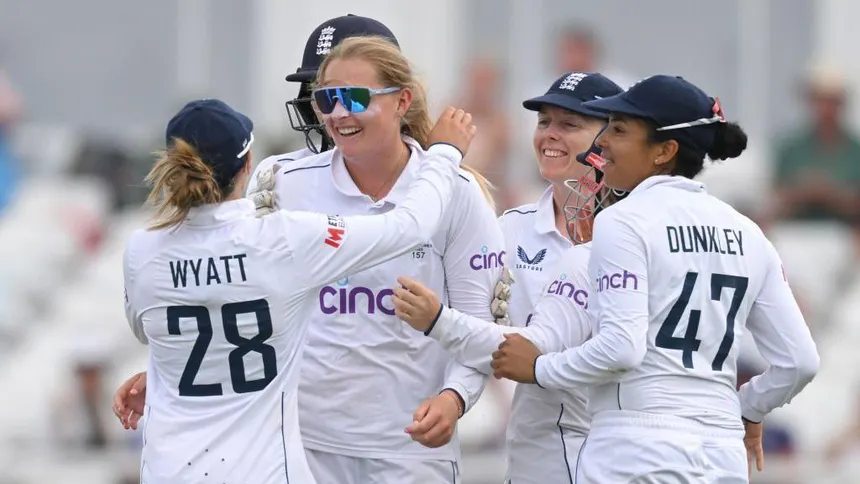
On a gloomy afternoon at Lord’s, England’s bowlers made full use of overcast conditions and a shortened 29-over format to restrict India to a below-par 143 for 8 in the second women’s ODI. While Smriti Mandhana stood tall with a gritty 42, the innings was dismantled by Sophie Ecclestone’s masterful spell of left-arm spin, picking up three vital wickets and firmly tilting the momentum England’s way.
Put in to bat under challenging skies, India’s start was rocky. Pratika Rawal fell cheaply in the second over, trapped leg-before by Em Arlott. The early breakthrough set the tone, and England’s bowlers maintained relentless discipline. The Indian top order never settled as Ecclestone removed Harleen Deol with a sharp caught-and-bowled, sending ripples through the dugout.
Mandhana, however, remained composed amid the chaos. She found limited support but stitched brief partnerships with Jemimah Rodrigues and later Deepti Sharma. Timing her strokes with elegance and anchoring the innings, Mandhana played the situation smartly. Yet just as India looked to push toward a competitive score, she fell leg-before to Charlie Dean, a decisive moment that exposed the lower order.
Deepti Sharma tried to steady things further, compiling an unbeaten 30, but India’s run rate stalled. The English spinners kept the pressure on, never allowing momentum to build. Ecclestone’s spell was particularly impactful—not just for her three wickets but for how she shut down scoring options. She dismissed Richa Ghosh and Harmanpreet Kaur with smart variations in flight and pace, leaving India floundering at the death.
India’s innings lacked the acceleration they desperately needed in the final overs. The power-hitters failed to connect, and England’s fielding unit backed up the bowlers with sharp stops and catches. As the innings ended on 143/8, the hosts walked off confident that they had kept the total within reach—even in a truncated match.
While Mandhana once again proved her mettle in difficult conditions, the absence of partnerships and middle-order firepower hurt India. The pitch, offering mild grip and bounce, was tailor-made for spin, and Ecclestone capitalized fully. Her combination with Dean in the middle overs broke India’s back—claiming wickets while keeping the scoring rate strangled.
The game’s turning point came between the 10th and 20th overs, where India lost four wickets for under 40 runs. That collapse ensured any late flourish was out of the question. In contrast, England’s bowling unit looked in control throughout—intelligent field settings, disciplined lengths, and sharp decision-making defined their performance.
Heading into the second innings, England will feel the odds are firmly in their favor. They need just 144 in 29 overs—manageable under most conditions. Yet, in cricket, pressure can be a great leveller. If India’s bowlers can strike early and generate some bite off the surface, the match could still swing.
For now, it’s Sophie Ecclestone who holds the spotlight. Her three-wicket performance didn’t just control India’s innings—it may have already shaped the outcome of the match.

